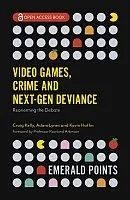By James D. Diamond
As violence in the United States seems to become increasingly more commonplace, the question of how communities reset after unprecedented violence also grows in significance. After the Bloodbath examines this quandary, producing insights linking rampage shootings and communal responses in the United States. Diamond, who was a leading attorney in the community where the Sandy Hook Elementary School tragedy occurred, focuses on three well-known shootings and a fourth shooting that occurred on the Red Lake Indian Reservation in Minnesota. The book looks to the roots of Indigenous approaches to crime, identifying an institutional weakness in the Anglo judicial model, and explores adapting Indigenous practices that contribute to healing following heinous criminal behavior. Emerging from the history of Indigenous dispute resolution is a spotlight turned on to restorative justice, a subject no author has discussed to date in the context of mass shootings. Diamond ultimately leads the reader to a positive road forward focusing on insightful steps people can take after a rampage shooting to help their wounded communities heal.
East Lansing: Michigan State University Press. 2019.






